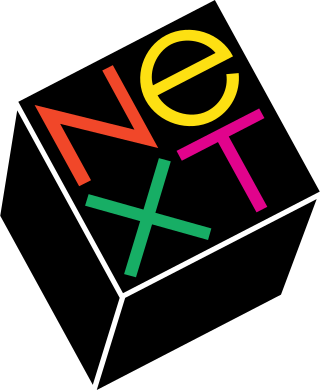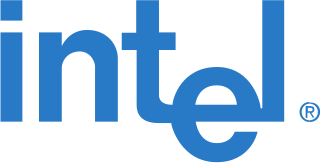See also
- All pages with titles containing development kit
-
 The dictionary definition of development kit at Wiktionary
The dictionary definition of development kit at Wiktionary
A development kit is a collection of software or hardware tools for aiding computer programmers in developing new software. The term often refers specifically to a software development kit (SDK), which is a collection of software development tools in one installable package.
Development kit may also refer to:

Microsoft DirectX is a collection of application programming interfaces (APIs) for handling tasks related to multimedia, especially game programming and video, on Microsoft platforms. Originally, the names of these APIs all began with "Direct", such as Direct3D, DirectDraw, DirectMusic, DirectPlay, DirectSound, and so forth. The name DirectX was coined as a shorthand term for all of these APIs and soon became the name of the collection. When Microsoft later set out to develop a gaming console, the X was used as the basis of the name Xbox to indicate that the console was based on DirectX technology. The X initial has been carried forward in the naming of APIs designed for the Xbox such as XInput and the Cross-platform Audio Creation Tool (XACT), while the DirectX pattern has been continued for Windows APIs such as Direct2D and DirectWrite.

The Intel 386, originally released as the 80386 and later renamed i386, is the third-generation x86 architecture microprocessor from Intel. It was the first 32-bit processor in the line, making it a significant evolution in the x86 architecture. Pre-production samples of the 386 were released to select developers in 1985, while mass production commenced in 1986. The 386 was the central processing unit (CPU) of many workstations and high-end personal computers of the time. The 386 began to fall out of public use starting with the release of the i486 processor in 1989, while in embedded systems the 386 remained in widespread use until Intel finally discontinued it in 2007.

OpenGL is a cross-language, cross-platform application programming interface (API) for rendering 2D and 3D vector graphics. The API is typically used to interact with a graphics processing unit (GPU), to achieve hardware-accelerated rendering.

OpenStep is an object-oriented application programming interface (API) specification developed by NeXT. It provides a framework for building graphical user interfaces (GUIs) and developing software applications. OpenStep was designed to be platform-independent, allowing developers to write code that could run on multiple operating systems, including NeXTSTEP, Windows NT, and various Unix-based systems. It has influenced the development of other GUI frameworks, such as Cocoa for macOS, and GNUstep.
In computing, cross-platform software is computer software that is designed to work in several computing platforms. Some cross-platform software requires a separate build for each platform, but some can be directly run on any platform without special preparation, being written in an interpreted language or compiled to portable bytecode for which the interpreters or run-time packages are common or standard components of all supported platforms.

In computer architecture, 64-bit integers, memory addresses, or other data units are those that are 64 bits wide. Also, 64-bit central processing units (CPU) and arithmetic logic units (ALU) are those that are based on processor registers, address buses, or data buses of that size. A computer that uses such a processor is a 64-bit computer.
A software development kit (SDK) is a collection of software development tools in one installable package. They facilitate the creation of applications by having a compiler, debugger and sometimes a software framework. They are normally specific to a hardware platform and operating system combination. To create applications with advanced functionalities such as advertisements, push notifications, etc; most application software developers use specific software development kits.

The Xbox Development Kit (XDK) is a software development kit created by Microsoft used to write software for the 2001 Xbox gaming system. The XDK includes libraries, a compiler, and various tools used to create software for the Xbox. The XDK has the option to integrate itself into Microsoft Visual Studio 2002 or 2003. This is needed if one wants to develop applications or games for the Xbox. The XDK also includes a tool to record in-game footage, which has been widely used to create high-quality screenshots and trailers.

Intel Architecture Labs (IAL) was the personal-computer system research-and-development arm of Intel during the 1990s.
Advanced Configuration and Power Interface (ACPI) is an open standard that operating systems can use to discover and configure computer hardware components, to perform power management, auto configuration, and status monitoring. It was first released in December 1996. ACPI aims to replace Advanced Power Management (APM), the MultiProcessor Specification, and the Plug and Play BIOS (PnP) Specification. ACPI brings power management under the control of the operating system, as opposed to the previous BIOS-centric system that relied on platform-specific firmware to determine power management and configuration policies. The specification is central to the Operating System-directed configuration and Power Management (OSPM) system. ACPI defines hardware abstraction interfaces between the device's firmware, the computer hardware components, and the operating systems.
Microsoft Windows SDK, and its predecessors Platform SDK, and .NET Framework SDK, are software development kits (SDKs) from Microsoft that contain documentation, header files, libraries, samples and tools required to develop applications for Microsoft Windows and .NET Framework. Platform SDK specializes in developing applications for Windows 2000, XP and Windows Server 2003. .NET Framework SDK is dedicated to developing applications for .NET Framework 1.1 and .NET Framework 2.0. Windows SDK is the successor of the two and supports developing applications for Windows XP and later, as well as .NET Framework 3.0 and later.
Steven McGeady is a former Intel executive best known as a witness in the Microsoft antitrust trial. His notes and testimony contained colorful quotes by Microsoft executives threatening to "cut off Netscape's air supply" and Bill Gates' guess that "this antitrust thing will blow over". Attorney David Boies said that McGeady's testimony showed him to be "an extremely conscientious, capable and honest witness", while Microsoft portrayed him as someone with an "axe to grind". McGeady left Intel in 2000, but later again gained notoriety for defending his former employee Mike Hawash after his arrest on federal terrorism charges. From its founding in 2002 until its sale in November 2013, he was Chairman of Portland-based healthcare technology firm ShiftWise. He is a member of the Reed College Board of Trustees, the Portland Art Museum Board of Trustees, and the PNCA Board of Governors, and lives in Portland, Oregon.

A microprocessor development board is a printed circuit board containing a microprocessor and the minimal support logic needed for an electronic engineer or any person who wants to become acquainted with the microprocessor on the board and to learn to program it. It also served users of the microprocessor as a method to prototype applications in products.
SciTech SNAP is an operating system portable, dynamically loadable, native-size 32-bit/64-bit device driver architecture. SciTech SNAP defines the architecture for loading an operating system neutral binary device driver for any type of hardware device, be it a graphics controller, audio controller, SCSI controller or network controller. SciTech SNAP drivers are source code portable between different microprocessor platforms, and the binary drivers are operating system portable within a particular microprocessor family.
An Internet operating system, or Internet OS, is any type of operating system designed to run all of its applications and services through an Internet client, generally a web browser. The advantages of such an OS would be that it would run on a thin client, allowing cheaper, more easily manageable computer systems; it would require all applications to be designed on cross-platform, open standards; and would not tie a user's applications, documents, and preferences to a single computer, but rather place them in the Internet cloud. The Internet OS has also been promoted as the perfect type of platform for software as a service.

The Chromium Embedded Framework (CEF) is an open-source software framework for embedding a Chromium web browser within another application. This enables developers to add web browsing functionality to their application, as well as the ability to use HTML, CSS, and JavaScript to create the application's user interface.

Intel Galileo is the first in a line of Arduino-certified development boards based on Intel x86 architecture and is designed for the maker and education communities. Intel released two versions of Galileo, referred to as Gen 1 and Gen 2. These development boards are sometimes called "Breakout boards".

Tango was an augmented reality computing platform, developed and authored by the Advanced Technology and Projects (ATAP), a skunkworks division of Google. It used computer vision to enable mobile devices, such as smartphones and tablets, to detect their position relative to the world around them without using GPS or other external signals. This allowed application developers to create user experiences that include indoor navigation, 3D mapping, physical space measurement, environmental recognition, augmented reality, and windows into a virtual world.